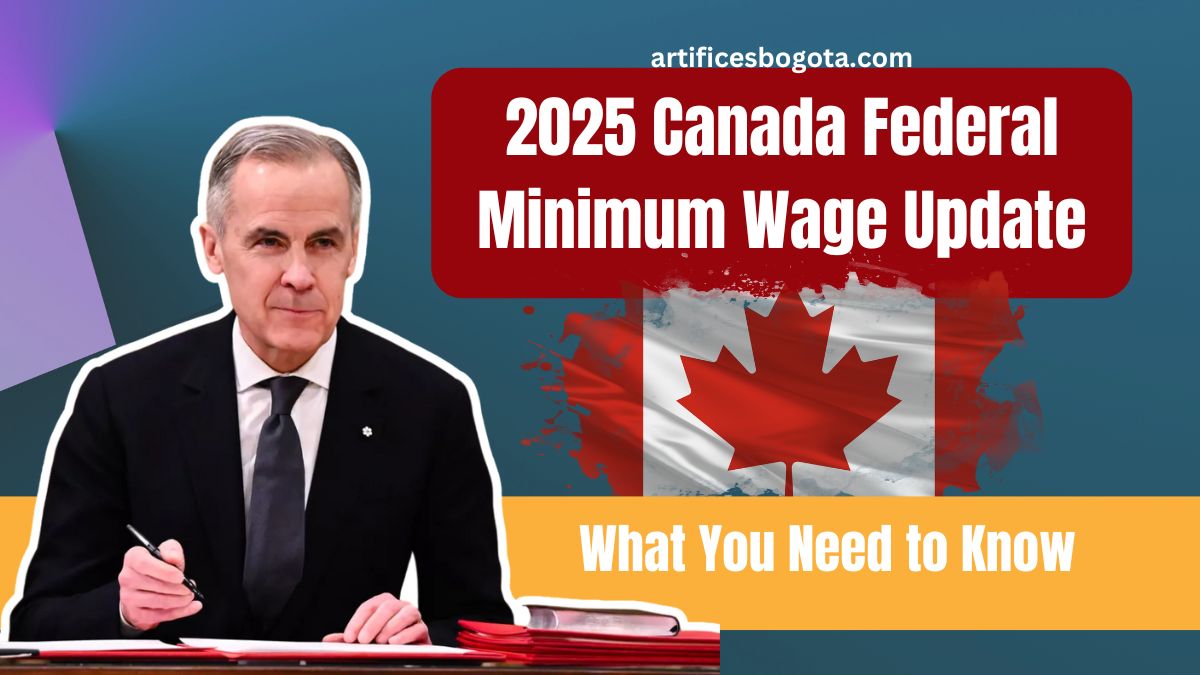The federal minimum wage in Canada is set for a rise in 2025, with a planned increase to $17.75 per hour, starting on April 1, 2025. This change reflects a 2.4% increase over the current minimum wage of $17.30.
The wage adjustment is part of Canada’s ongoing efforts to help workers cope with inflation and the growing cost of living, providing essential support for those in federally regulated sectors.
This article provides an in-depth breakdown of what this wage increase means for employees, employers, and the broader economy.
Key Details About the 2025 Federal Minimum Wage Increase
| Topic | Details |
|---|---|
| New Federal Minimum Wage | $17.75 per hour (effective April 1, 2025) |
| Previous Wage | $17.30 per hour (2024) |
| Increase Rate | 2.4% |
| Affected Sectors | Federally regulated industries (e.g., banking, telecom, transportation) |
| Comparison | Provincial wages may be higher; employers must pay the highest rate |
| Official Source | Government of Canada |
What is the Federal Minimum Wage in Canada?
The federal minimum wage is the lowest legal hourly pay that employers in federally regulated industries must offer their employees. This wage applies specifically to sectors such as:
- Banking
- Telecommunications
- Air Transportation
- Postal Services
While most workers across Canada are subject to provincial or territorial minimum wages, employees in federally regulated sectors must receive at least the federal minimum wage unless the local wage rate is higher.
How Do Provincial Wages Compare to the Federal Minimum Wage?
Each province and territory in Canada sets its own minimum wage, which can be higher than the federal rate. Employers are required to adhere to whichever rate is higher between the federal and provincial standards.
Some key provincial wage updates for 2025 are:
- British Columbia: $17.85/hour (effective June 1, 2025)
- Nova Scotia: $15.70/hour (effective April 1, 2025), increasing to $16.50/hour (effective October 1, 2025)
- Yukon: $17.94/hour (effective April 1, 2025)
For further details, you can visit the Retail Council of Canada.
Why Is the Minimum Wage Increasing?
The annual wage adjustment is aligned with Canada’s Consumer Price Index (CPI), which ensures that wages keep pace with the cost of living.
As the prices of essential goods and services, such as housing, food, and transportation, continue to rise, increasing the minimum wage helps ensure that workers’ purchasing power remains stable.
The Canadian inflation rate has been a significant factor, and this wage increase is designed to help workers maintain their financial well-being despite the rising cost of living.
Historical Federal Minimum Wage Changes
Here is a look at the progression of the federal minimum wage in Canada over recent years:
- 2021: $15.00 per hour
- 2022: $15.55 per hour
- 2023: $16.65 per hour
- 2024: $17.30 per hour
- 2025: $17.75 per hour
Impact on Workers and Employers
How Will Workers Benefit?
The wage increase will have several key benefits for employees:
- Higher Earnings: Workers will see a direct boost in their paychecks.
- Improved Purchasing Power: With the cost of living rising, higher wages will help workers better afford everyday expenses.
- Job Security: The increase encourages the fair compensation of workers in federally regulated industries, fostering job stability.
What Employers Need to Know
Employers will need to take several steps to ensure compliance with the new wage law:
- Payroll Adjustments: Employers must update their payroll systems to reflect the new wage rate.
- Compliance Checks: Businesses must ensure that their pay structures meet the federal and provincial standards.
- Budget Considerations: Some companies may experience increased labor costs, particularly in industries that rely on minimum-wage workers.
To ensure compliance, employers are encouraged to review the Government of Canada’s official wage guidelines.
Economic Implications of the Wage Increase
Positive Economic Effects
The wage increase is expected to have several positive impacts on the economy:
- Increased Consumer Spending: With higher wages, workers will have more disposable income, leading to greater consumer spending.
- Reduced Income Inequality: By raising the minimum wage, the government helps workers in lower-paying jobs maintain financial stability, contributing to a reduction in income inequality.
- Encouragement of Fair Compensation: The increase also serves as a step towards ensuring fair pay across federally regulated sectors.
Potential Challenges
However, the increase may also bring about some challenges:
- Higher Labor Costs: Small businesses in particular may face challenges due to the higher wage costs.
- Inflationary Effects: The wage increase could lead to price adjustments in some sectors, as businesses adjust to higher labor costs.
- Employment Concerns: In some cases, employers may reduce their hiring or cut employee hours to offset the higher wage burden.
The 2025 federal minimum wage increase in Canada is an essential measure to help workers cope with the rising cost of living and inflation.
While it provides significant benefits for employees, ensuring they can afford necessary goods and services, employers will need to adjust their payroll systems and budgets to comply with the new wage rate.
The overall economic impact includes higher consumer spending, reduced income inequality, and potential challenges for businesses in managing increased labor costs.
FAQs
What sectors are impacted by the 2025 federal minimum wage increase in Canada?
The 2025 federal wage increase applies to employees in federally regulated industries, including banking, telecommunications, air transportation, and postal services.
How much will the minimum wage be increased in 2025?
Starting on April 1, 2025, the minimum wage will increase to $17.75 per hour, representing a 2.4% increase from the previous year’s rate of $17.30.
Are provincial wages higher than the federal minimum wage?
Yes, in some provinces, the minimum wage is higher than the federal rate. Employers must pay whichever wage is higher—federal or provincial.
Why is the minimum wage adjusted each year?
The federal minimum wage is adjusted annually based on the Consumer Price Index (CPI) to ensure wages keep up with inflation and the rising cost of living.




